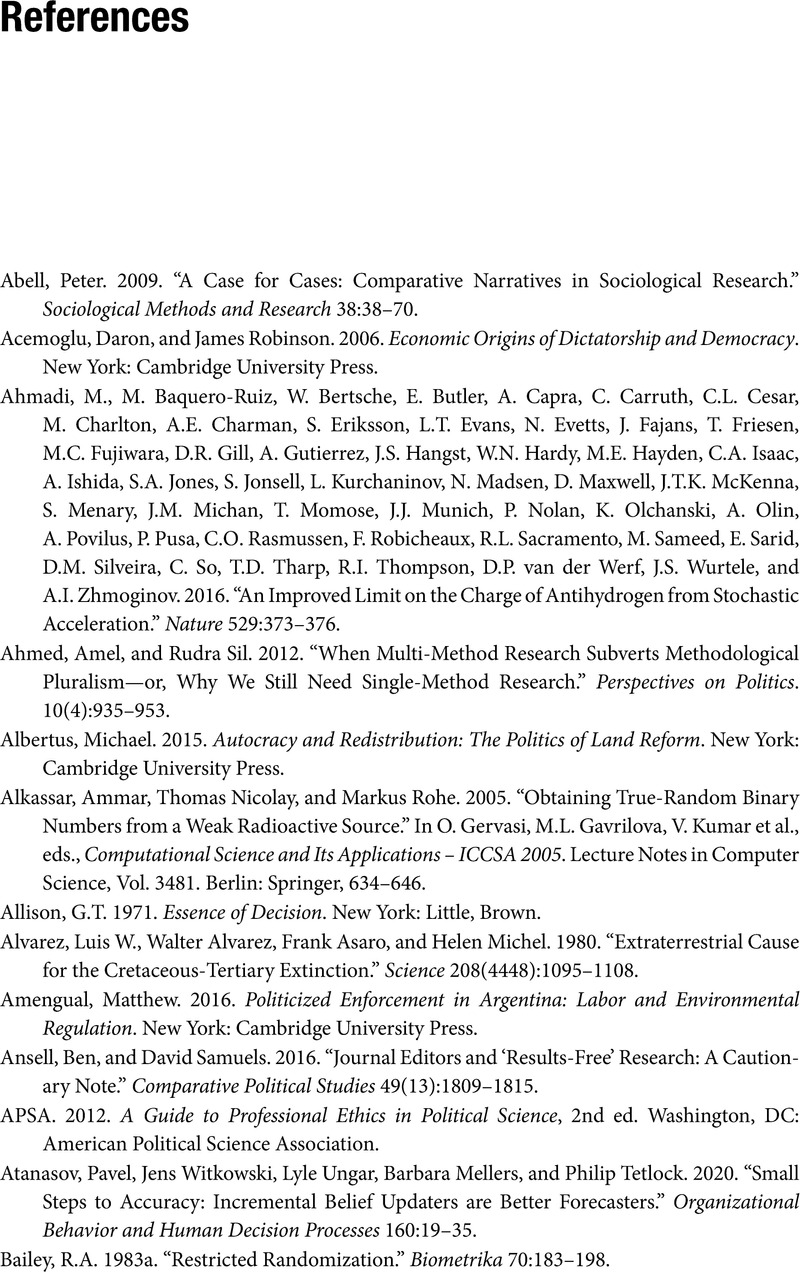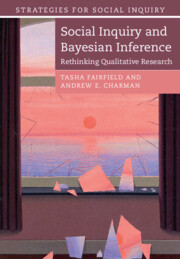Book contents
- Frontmatter
- Contents
- Figures
- Tables
- Acknowledgments
- A Note on the Cover
- Part I Foundations
- Part II Operationalizing Bayesian Reasoning in Qualitative Research
- Part III Bayesianism in Methodological Perspective
- Part IV Bayesian Implications for Research Design
- Part V Supplemental Material
- References
- Index
- References
References
Published online by Cambridge University Press: 28 July 2022
- Frontmatter
- Contents
- Figures
- Tables
- Acknowledgments
- A Note on the Cover
- Part I Foundations
- Part II Operationalizing Bayesian Reasoning in Qualitative Research
- Part III Bayesianism in Methodological Perspective
- Part IV Bayesian Implications for Research Design
- Part V Supplemental Material
- References
- Index
- References
Summary

- Type
- Chapter
- Information
- Social Inquiry and Bayesian InferenceRethinking Qualitative Research, pp. 645 - 658Publisher: Cambridge University PressPrint publication year: 2022



